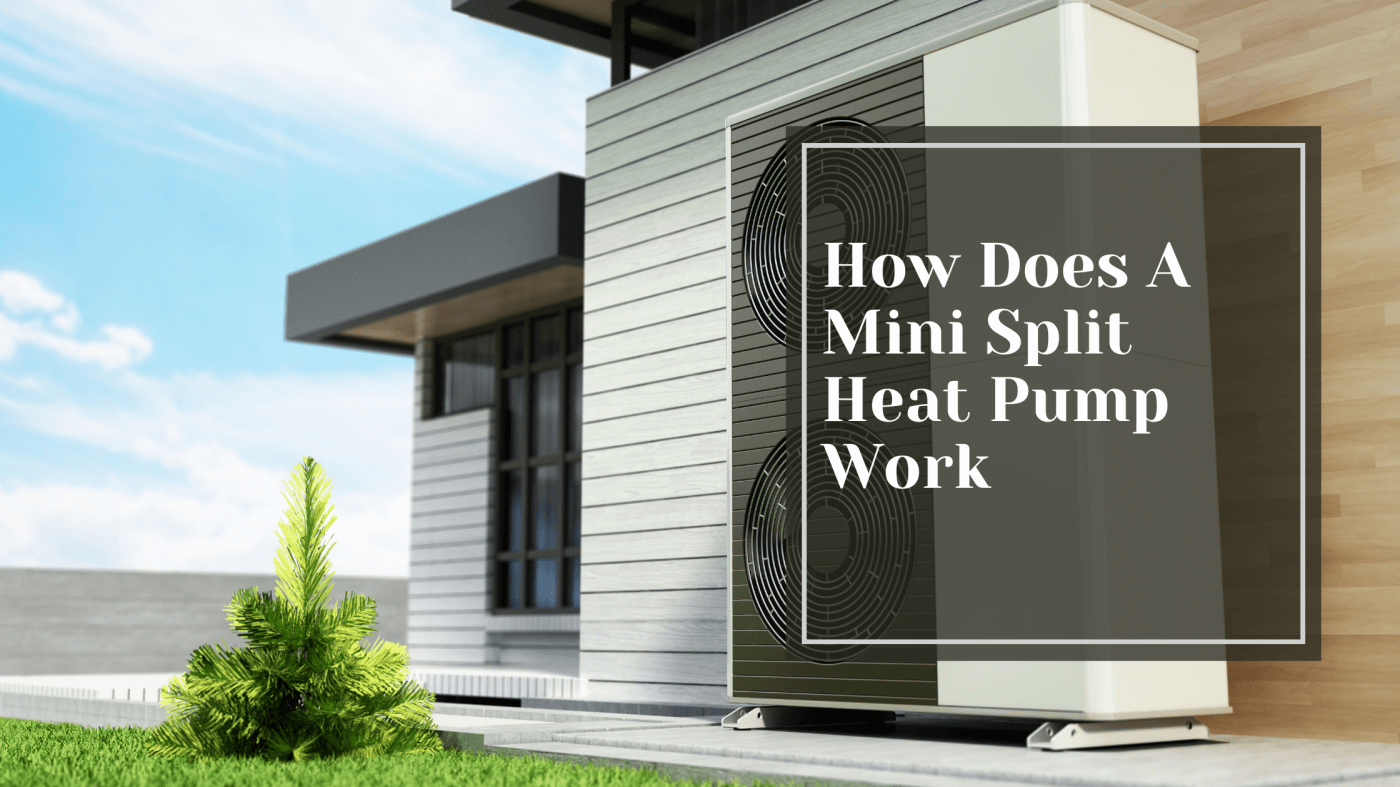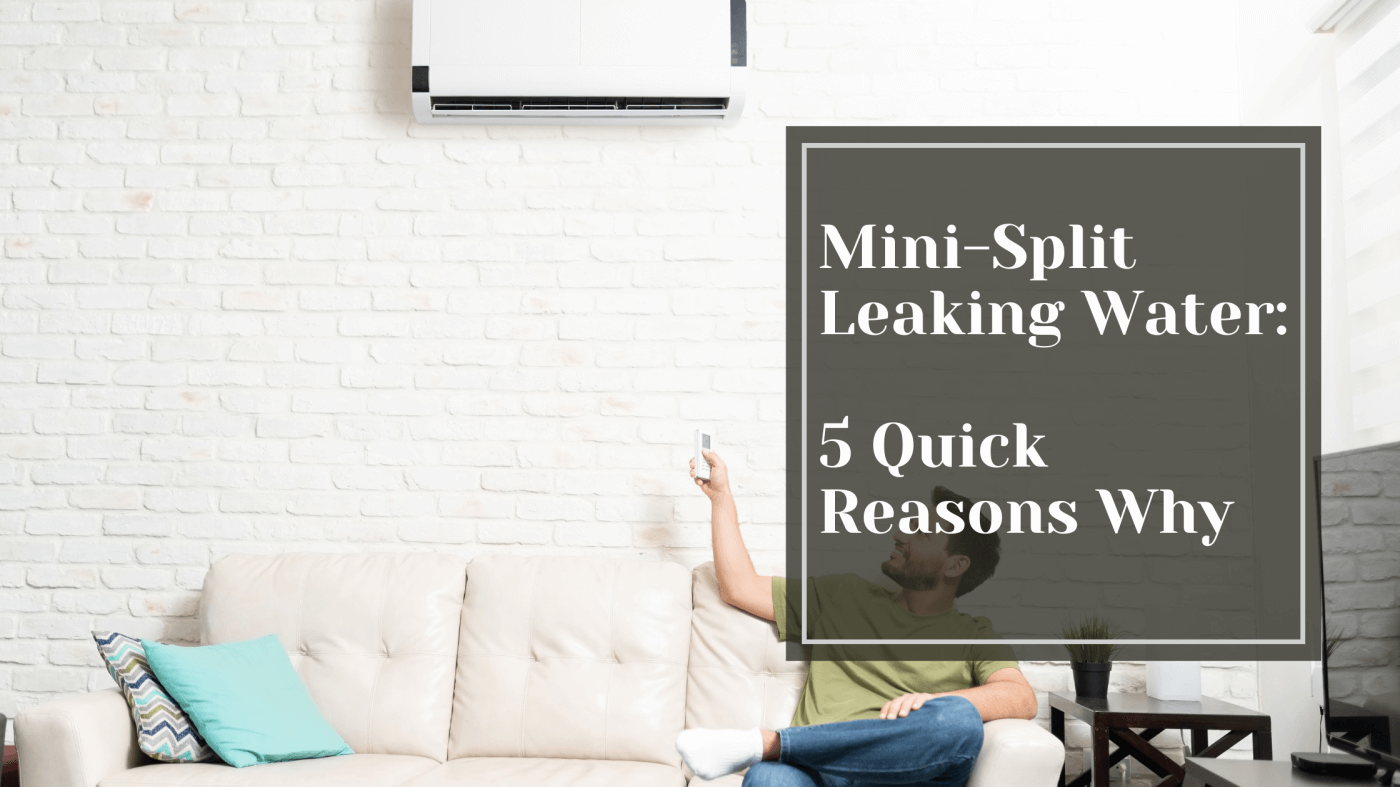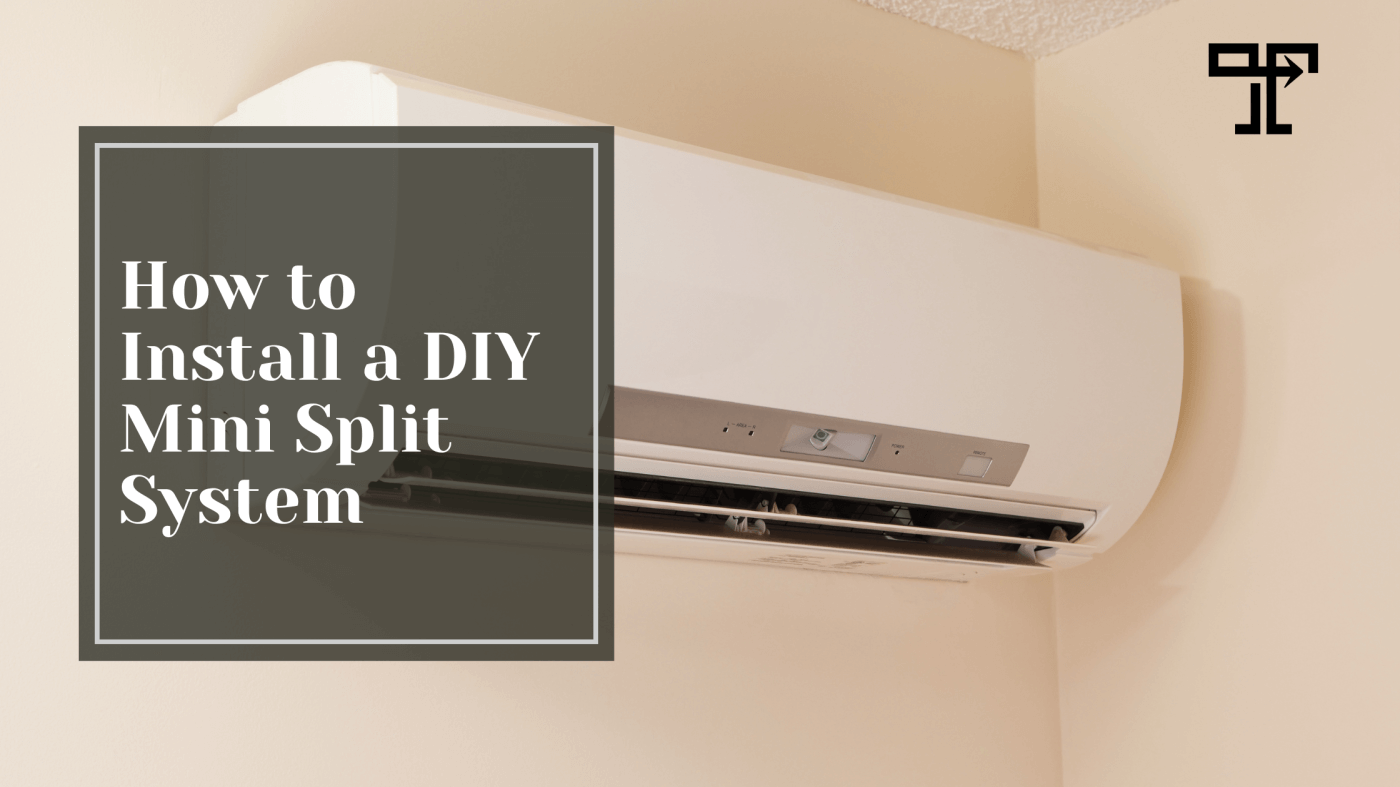Heat pumps have been around since the 1850s, but unlike that old, beat-up road you drive on – they've only improved with time. HVAC innovations have made heat pump systems an excellent option for modern-day comfort. So now it's time to answer the question how does a mini-split heat pump work?
So, How Does a Mini Split Heat Pump Work?
Heat pumps are unique from other heating systems in that they don't create heat but rather move it around. They're more efficient, require less maintenance than traditional air systems, and provide heating and cooling from the same system – making them a superb, cost-saving 2-in-1!
But with so many choices, which one is the best on the market? We'll break down the three major types, giving you the quick and easy need-to-know regarding this impressive technology.
There are three main types of electric heat pumps:
- Air-Source Heat Pumps (ASHP)
- Ground-Source Heat Pumps (GSHPs) and
- Water-Source Heat Pumps (or Geothermal)
Air-Source Heat Pumps (ASHP)
Of the air-source units, there are ducted and ductless (also called mini-splits). Ducted heat pumps are the most common, but ductless systems are becoming more popular in recent years.
Ducted Heat Pumps
These are like your traditional central air systems – the kind most of us grew up with, but not all central air systems have heat pump units. They all use ducts and vents to distribute regulated temperatures to each zone with a wall thermostat to control it, but split-system ACs only cool. It takes a ducted ASHP to pump heat and humidity into or out of your home – hence the "pump" in the heat pump.
Pro
- Many ducted ASHP's provide a dual system for heating and cooling.
- It can reduce your electricity bill by ~50% compared to electric resistance heating such as furnaces and baseboard heaters. Click here
- There isn't much research available comparing the efficiency of ducted vs. ductless heat pumps. However, the average efficiency of indoor heat pumps as a whole can reach well over 400% in cold climates.
Con
- Only indoor application is available since ducting is not generally feasible or realistic outside.
- ASHP's are the least efficient option of the three heat pump models, but still much more efficient than gas or conventional AC heating.
Ductless Heat Pumps
Ductless heat pumps, also known as mini-split systems, work much like traditional central air systems, except they do not use ducts at all. Instead, they release heating and cooling from individual air handling units in each room (or zone), all connected to an outside air condenser.
Pro
- Mini-splits are, on average, 30% more efficient than traditional ducted AC.
- They take up much less space since they do not require ducting – making them a great option, especially when ductwork is not possible or costly.
- They come in single or multi-zone designs, allowing you greater installation flexibility to control one room or many.
- You can change the temperature of rooms individually from the air handler located there, giving you more significant and more effective control of your system.
- With a relatively straightforward process, ductless heat pumps are usually the cheapest to install – and can even do a good DIY project since they are good kits available from brands like MRCOOL.
Con
- Ductless mini-split systems are not necessarily a practical option for every setting. It may not be cost-effective in larger spaces or places with many rooms since that means more zones and more units to buy and install.
- Air distribution can sometimes be an issue, particularly if the heat pump is not situated or appropriately sized and cannot sufficiently condition the area.
MRCOOL E Star DIY 4th Gen 36k BTU Ductless Mini-Split Heat Pump Complete System - 208-230V/60Hz

$2,888.00
E Star DIY 4th Gen 36k BTU Ductless Mini-Split Heat Pump Complete System - 208-230V/60Hz The E Star DIY 4th Gen 36k BTU Ductless Mini-Split Heat Pump Complete System - 208-230V/60Hz is a high-performance heating and cooling solution for medium… read more
Ground Source Heat Pumps (GSHP)
Ground source heat pumps use the soil under your house as the heat capture source and heat sink (where the heat is released). At about six feet under the ground, temperatures stay relatively consistent, around 45° to 60° all year long. GSHPs reliably take advantage of this by connecting to it through loop lines.
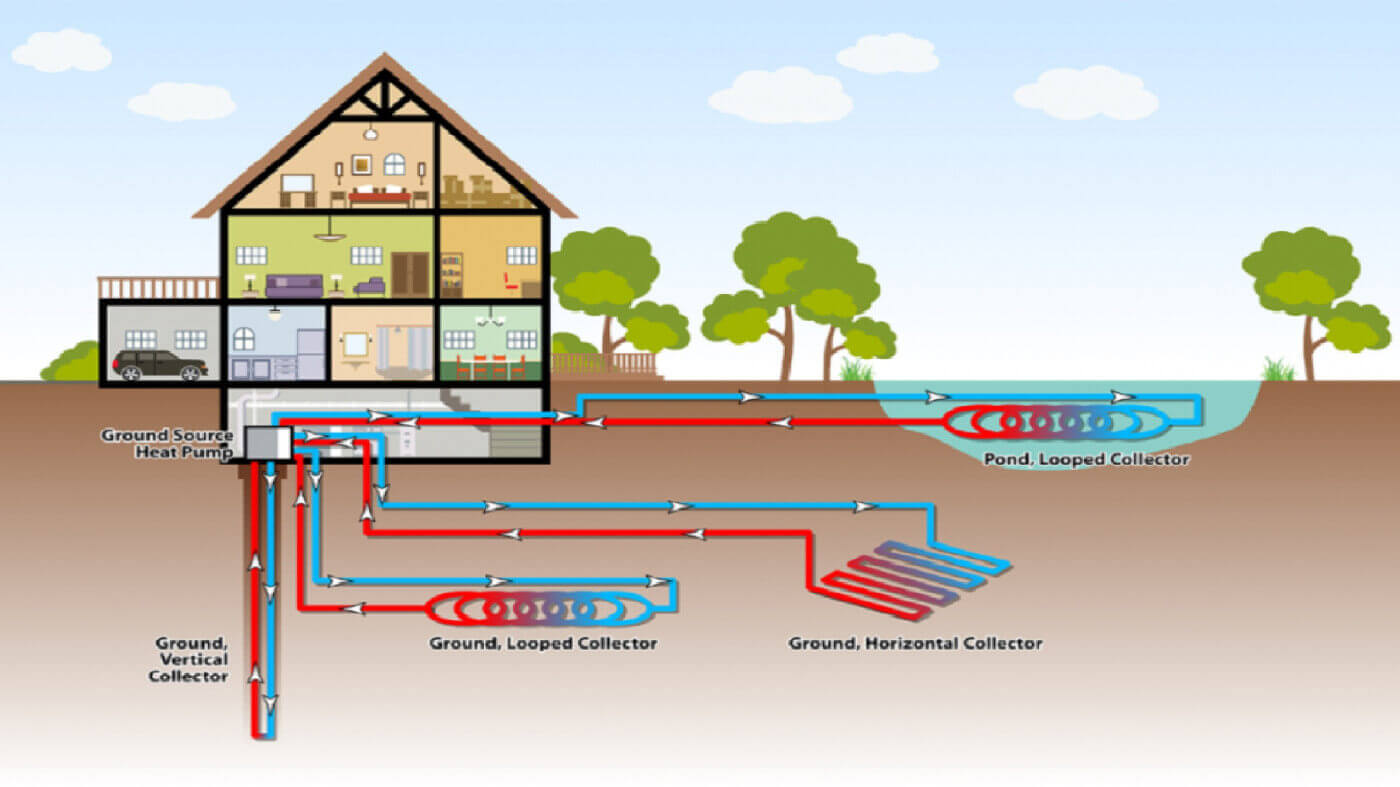
Pro
- Their energy output is about 3 - 4 times greater than their energy requirement, making them highly efficient even among heat pumps.
- Ground source units require very little maintenance, even less than ASHP's.
- WSHPs can maintain highly efficient operations and perform heat recovery with a limited amount of refrigerant charge. This is a plus because refrigerant is caustic, and high-system refrigerant is a potential safety hazard.
- New vertical and horizontal heat exchanger options have made it possible to have GSHP heating where it would not have been before, allowing greater installation flexibility.
- No exhaust is produced, making them (and essentially all heat pumps) an environmentally friendly choice.
Con
- Like geothermal, GSHPs are much more extensive systems that cost significantly more than standard ASHPs and are uncommon for residential houses.
- If you do have issues with your system after installation, it can be very costly to diagnose or repair it since it often involves digging and trenching.
Geothermal Heat Pumps
Geothermal is a bit of a misnomer since it leads people to think it's the same as ground-source heat pumps. They work similarly using the same mechanism – extracting heat from where it's not wanted or needed and pumping it to where you do.
The ground remains at a relatively constant temperature a few feet below the earth's surface. GSHPs and geothermal both take advantage of these temperatures, except geothermal actually refers to the heat drawn from underground water—an easy confusion.
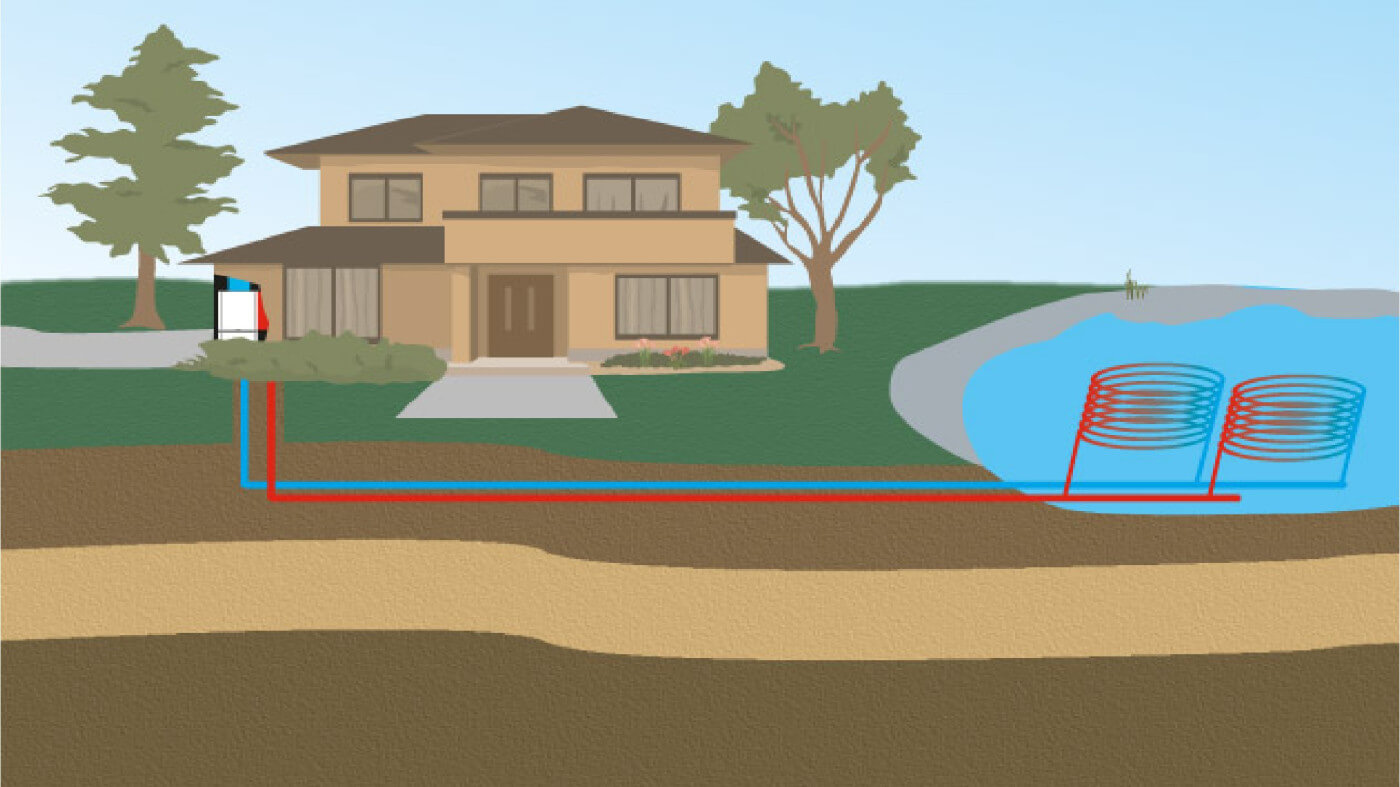
Pro
- An incredibly efficient form of electric heating and the most efficient among heat pumps since water is a great thermal conductor. Current units on the market estimate you can pay them off in 5 - 10 years from the energy savings.
- Geothermal heat pumps are cheaper to install than GSHPs since they usually require less groundwork.
- Eco-friendly. Since the water used is recycled back to the underground where it came from – nothing is disturbed in operation.
- There is no large outdoor air compressing unit like ASHP's have. The lines are buried underground, keeping them completely out of sight and out of the way.
Con
- Geothermal and GSHPs are typically used for businesses and larger buildings. They're the more expensive option for both the unit and installation. They're not common residentially since they can be several times more costly to install than an ASHP.
- Geothermal may not be practical or viable if accessible groundwater is unavailable or is not seasonally consistent.
Your Go-To Mini-Split Resource
If you found this mini-split guide helpful, be sure to check out our other related blog posts. We have articles that talk about Where You Should Install Your Ductless Mini-Splits. You can't miss our list of Best Mini-Split Air Conditioners 2023. If you're curious about How A Mini Split Heat Pump Works, you can check it out here. But of course, before you decide on getting yourself a mini-split system, you may want to find out if Mini-Splits Right For You and whether or not you can DIY a Mini-Split Installation.

